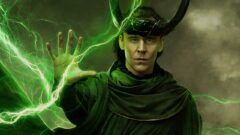Visualization takes to new heights to support the stunning WWII streaming series Masters of the Air. The Third Floor collaborated with VFX Supervisor Stephen Rosenbaum and the show team across multiple production phases to support visualization for the look and action of scenes. Visualized shots were also used on wrap-around LED walls for immersive reference during portions of the filming.
A key goal was for the aerial battles to have a cinematic documentary feel, with cameras as grounded as possible most of the time, and shots that would transport audiences into the dangerous missions experienced by the bomber crews.
“To help with the creation of previs and guiding our team to really capture this feeling in visualized shots, I took private flying lessons and spent time in flight simulators with WWII aircraft,” said Visualization Supervisor Matt Smart, The Third Floor London. “We used these experiences to get a correct sense of the planes, to see how they operated and understand the types of movement that would be expected for certain maneuvers. With the amount of action that takes place in aircraft across the series, this was very helpful as shots and ideas were developed throughout the visualization process.”
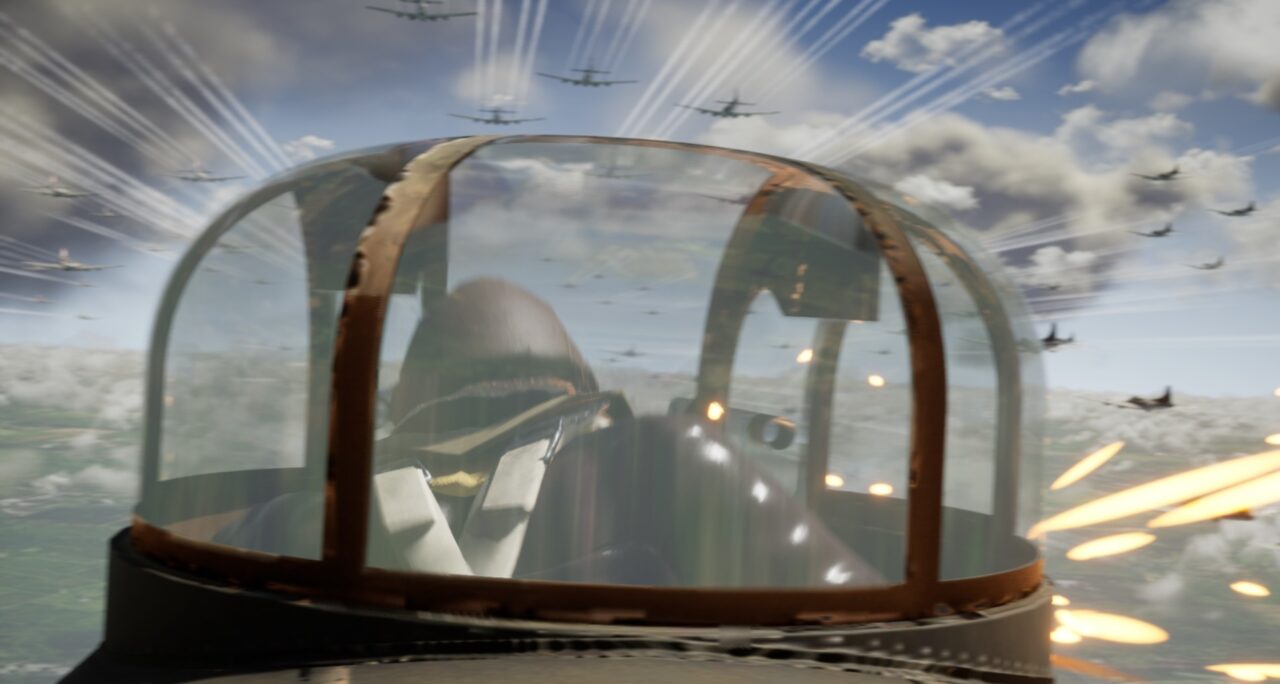
Visualized shots show bomber crews in their extremely confined and dangerous environment.
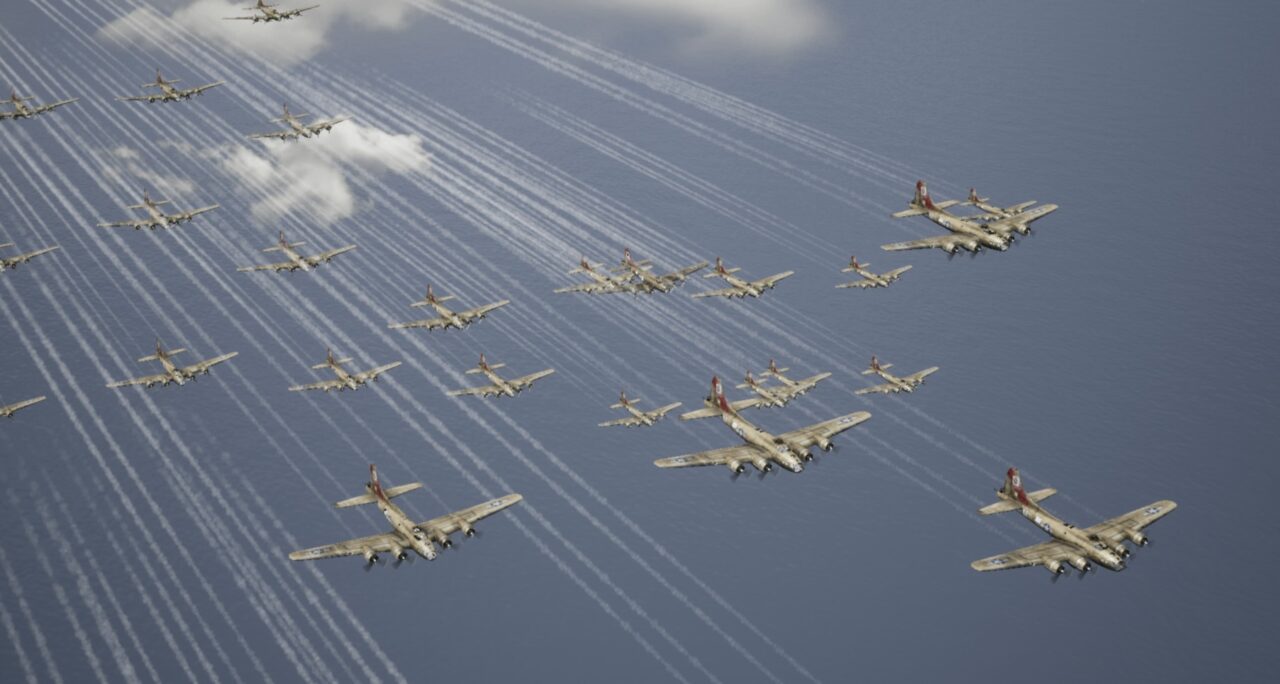
Previs shot, depicting planes forming up in preparation for the battle ahead.
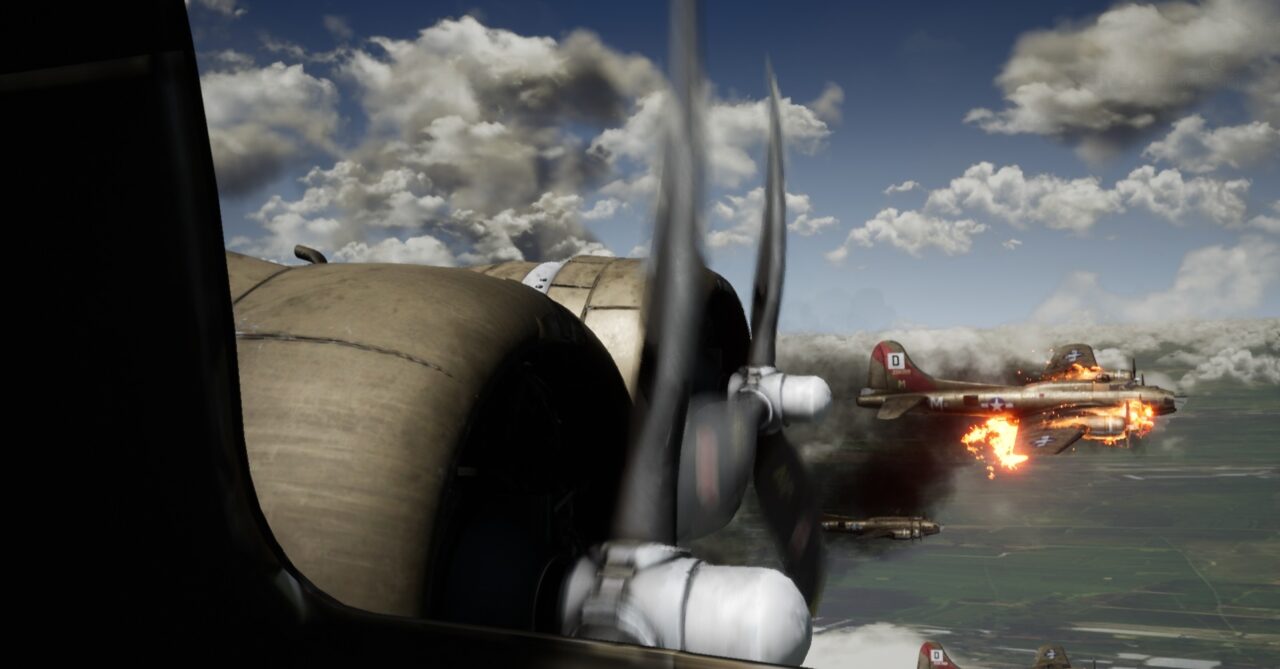
Visualization of planes, clouds and explosions as the action ensures.
Many sequences of the American Bombers taking off and completing their missions on various targets across Germany were visualized. This included scenes where the Luftwaffe would arrive, resulting in epic aerial battles and a depiction of what the crew went through to survive each onslaught.
Two episodes focus on the Tuskegee Airmen and their P51 fighter planes as they slip behind enemy lines and assault ground targets. Smart comments, “These scenes were a nice contrast to visualization on the bomber episodes. With these shots, we were able to explore what the action would be like from a more high-speed interior cockpit.”
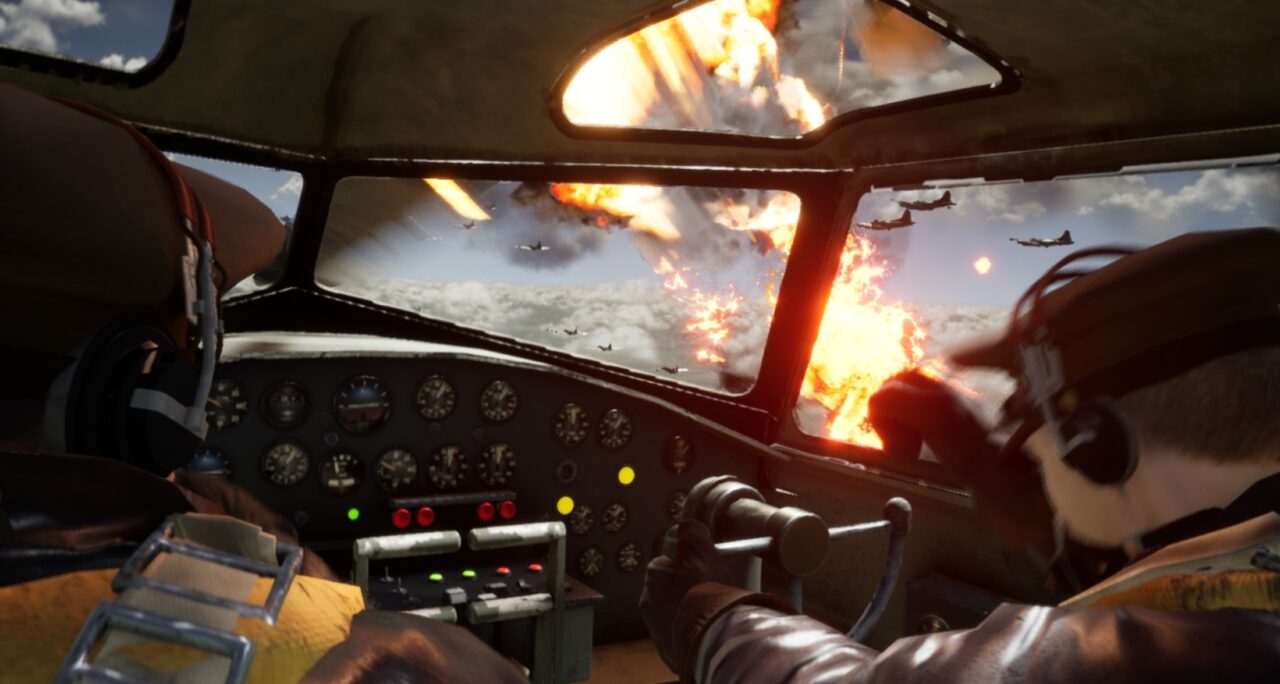
High-speed aerial battles were visualized from inside the cockpit.
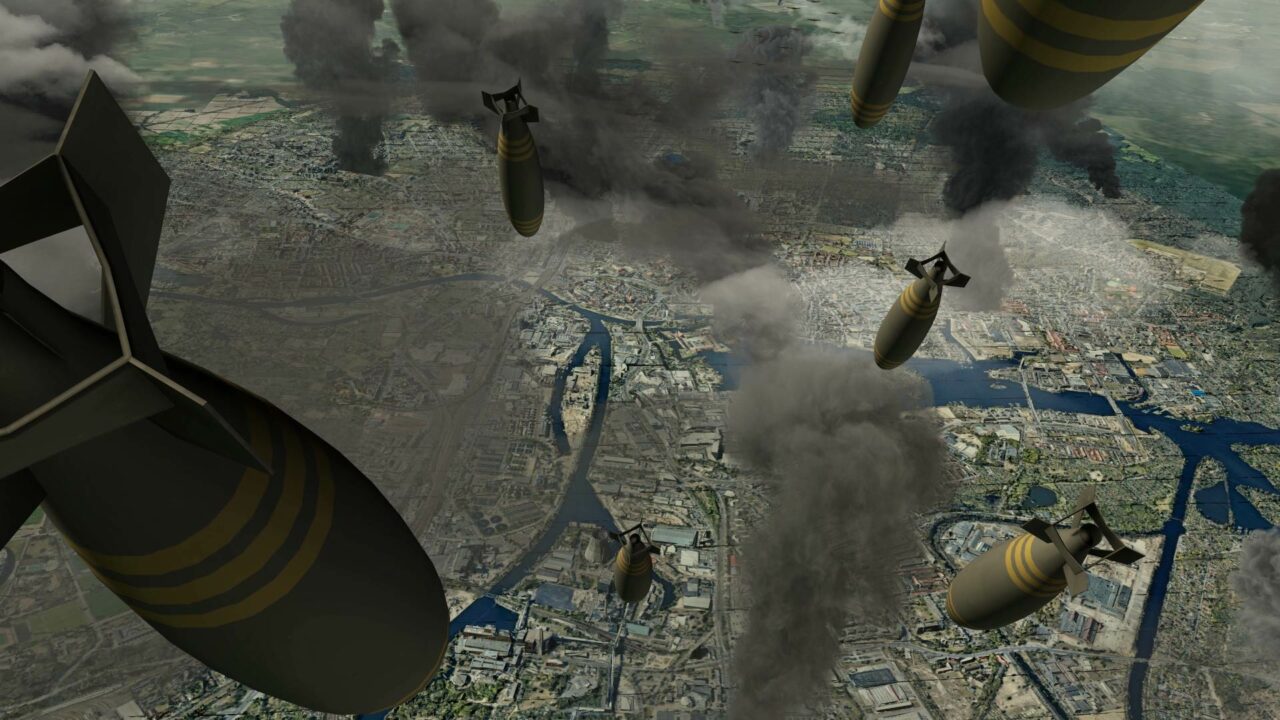
Previs frame, visualizing bombs dropped over Berlin.
Techvis was produced for certain visualized moves that the filmmakers wanted to reproduce in camera. Visualized shots provided reference for live-action filming, with camera operators lensing moves in keeping with the hand-held style of the show.
For the aerial battle sequences, production mounted sections of a B17 bomber on a hydraulic motion base and surrounded them with an LED projection wall showing the previs. This gave the actors a fully immersive environment, with built in lighting and eyelines and versions of the imagery to reference.
“The team created previs ‘master scenes’ – long stretches of action lasting around 5-10 minutes that provided uninterrupted sections of the battles as a reference backdrop that the actors could see and react to,” said Virtual Production Supervisor Michael McCrea, The Third Floor. “Unreal Engine was utilized to give the previs additional dimensions of realism, and to help us enact ideas and changes in real time as we visualized a vast quantity of planes and enemy fighters, along with clouds and cities. We could cue up and trigger previs elements like explosions if they wanted to see that effect happen on the fly in the on-screen ‘vis, and easily change time of day or weather based on the needs of the film team.”
During post production, postvis artists would enhance or add visuals to footage that had been filmed on LED walls or eliminate green/bluescreens in temporary composites for editorial.
Smart adds: “One main task for postvis was adding planes in the air to complement the motorized ground B17 hero planes filmed by production. The absence of practical, flying B17s meant that digital flying versions needed to be blocked for moments when the planes took off from airfields or were already airborne in the shots.”
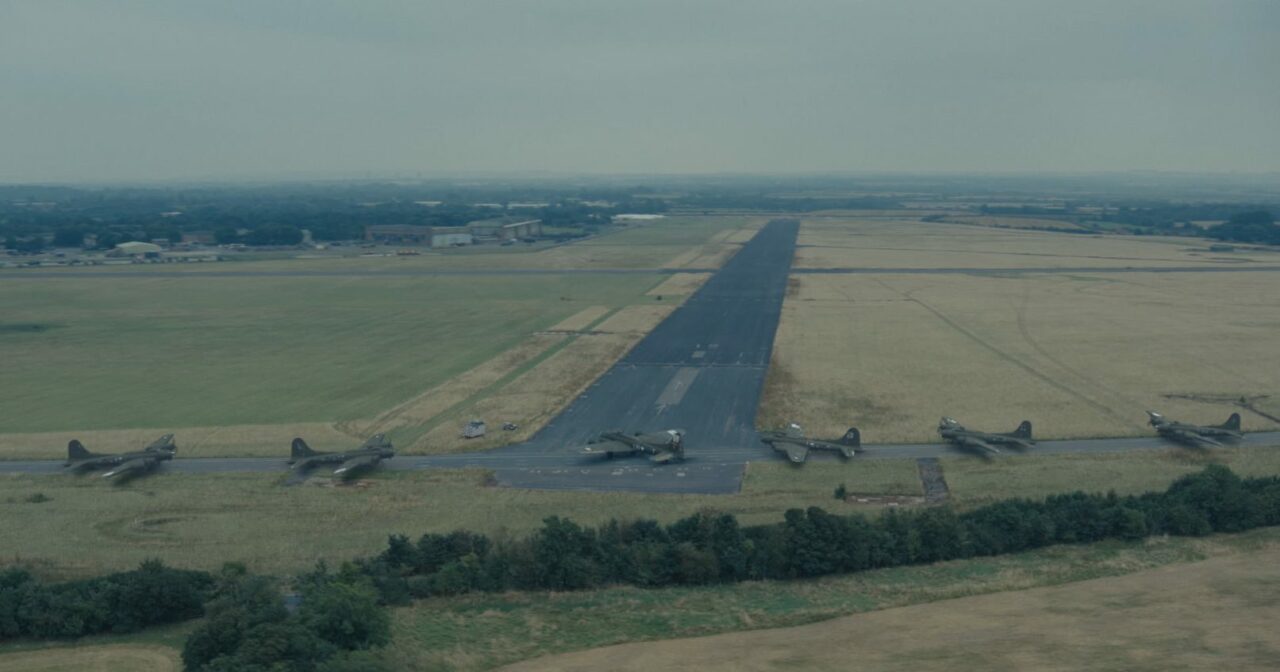
Multiple B17s are lined up and ready to take off in a postvis comp.
The Third Floor’s virtual production tool Cyclops allowed additional aircraft to be visualized within the filmed airfield locations. Several practical B17s had been built by production to film on set and further planes would be added later in post to complete the visual of dozens fighters queuing up on the runways. Through use of Cyclops AR, digital aircraft could be visualized and framed in context to the real planes and ground/sky environments.
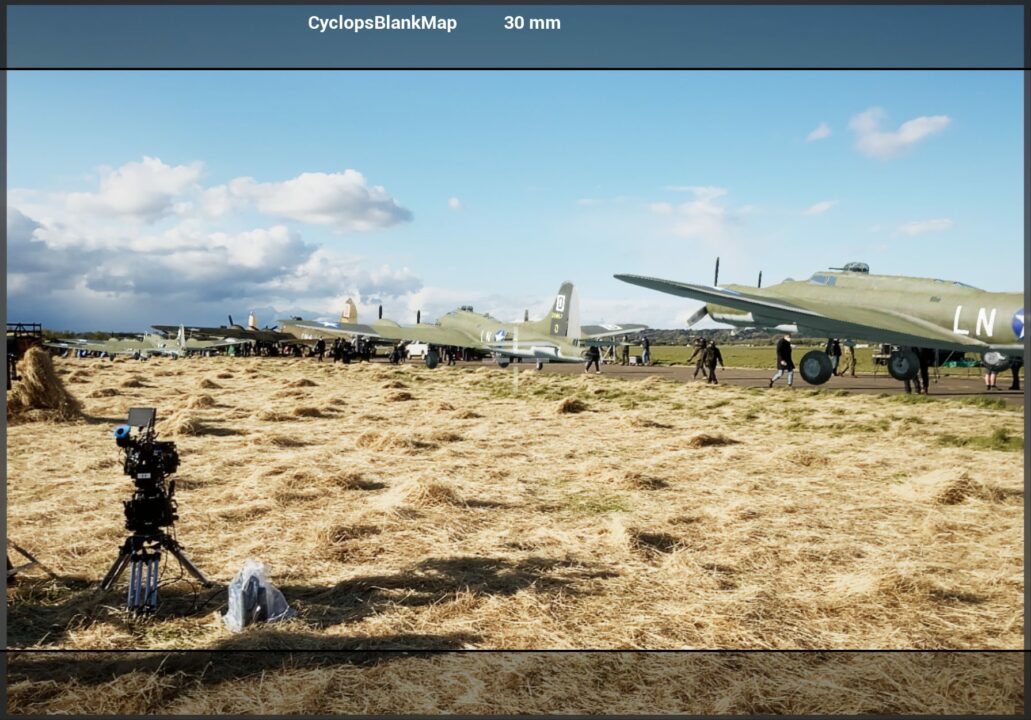
B17s on the runway seen through the viewfinder of Cyclops AR.




